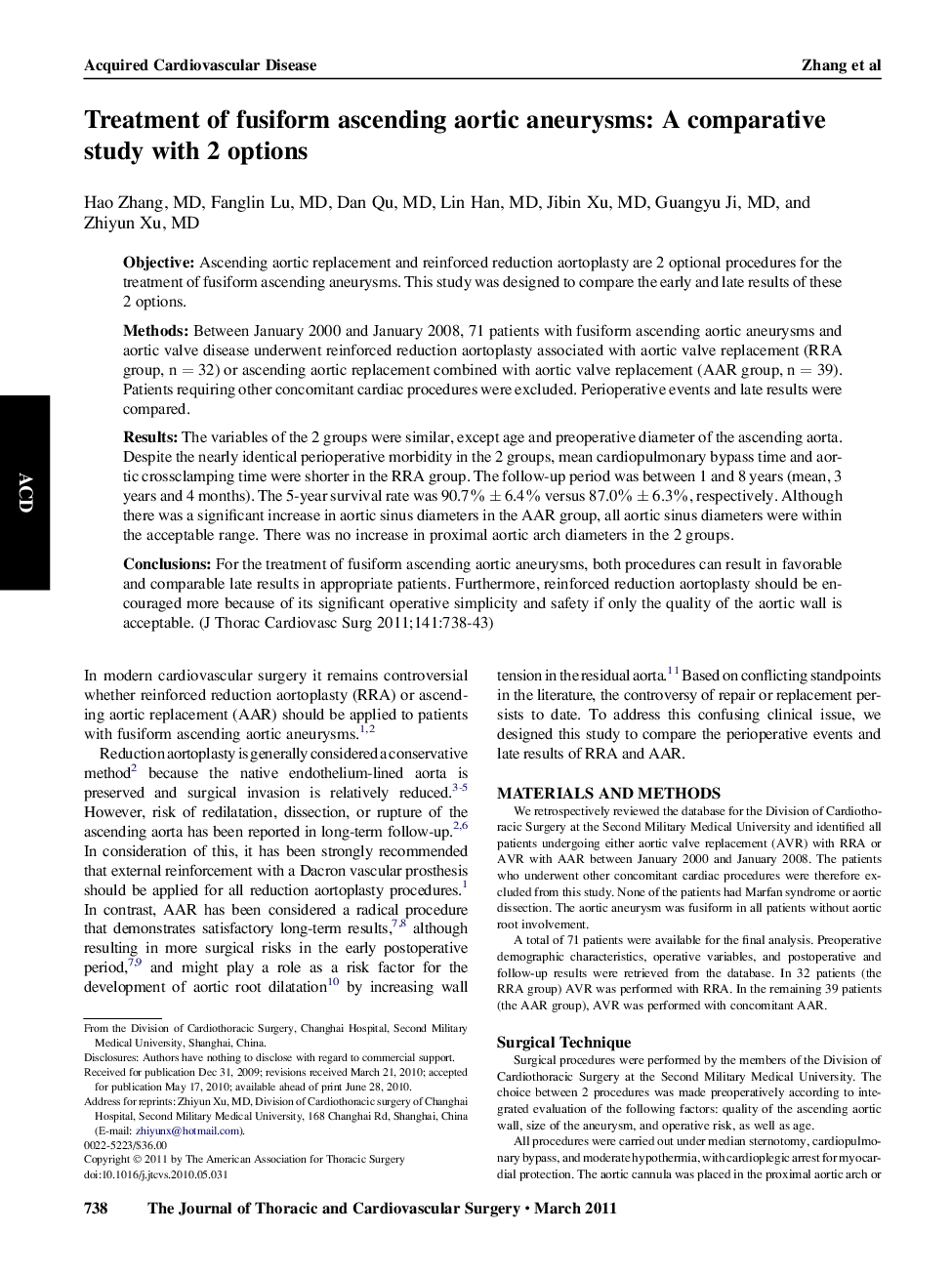| Article ID | Journal | Published Year | Pages | File Type |
|---|---|---|---|---|
| 2981626 | The Journal of Thoracic and Cardiovascular Surgery | 2011 | 6 Pages |
ObjectiveAscending aortic replacement and reinforced reduction aortoplasty are 2 optional procedures for the treatment of fusiform ascending aneurysms. This study was designed to compare the early and late results of these 2 options.MethodsBetween January 2000 and January 2008, 71 patients with fusiform ascending aortic aneurysms and aortic valve disease underwent reinforced reduction aortoplasty associated with aortic valve replacement (RRA group, n = 32) or ascending aortic replacement combined with aortic valve replacement (AAR group, n = 39). Patients requiring other concomitant cardiac procedures were excluded. Perioperative events and late results were compared.ResultsThe variables of the 2 groups were similar, except age and preoperative diameter of the ascending aorta. Despite the nearly identical perioperative morbidity in the 2 groups, mean cardiopulmonary bypass time and aortic crossclamping time were shorter in the RRA group. The follow-up period was between 1 and 8 years (mean, 3 years and 4 months). The 5-year survival rate was 90.7% ± 6.4% versus 87.0% ± 6.3%, respectively. Although there was a significant increase in aortic sinus diameters in the AAR group, all aortic sinus diameters were within the acceptable range. There was no increase in proximal aortic arch diameters in the 2 groups.ConclusionsFor the treatment of fusiform ascending aortic aneurysms, both procedures can result in favorable and comparable late results in appropriate patients. Furthermore, reinforced reduction aortoplasty should be encouraged more because of its significant operative simplicity and safety if only the quality of the aortic wall is acceptable.
